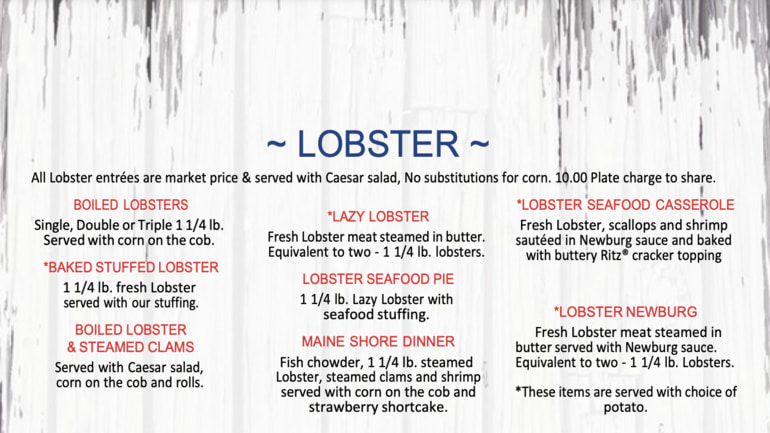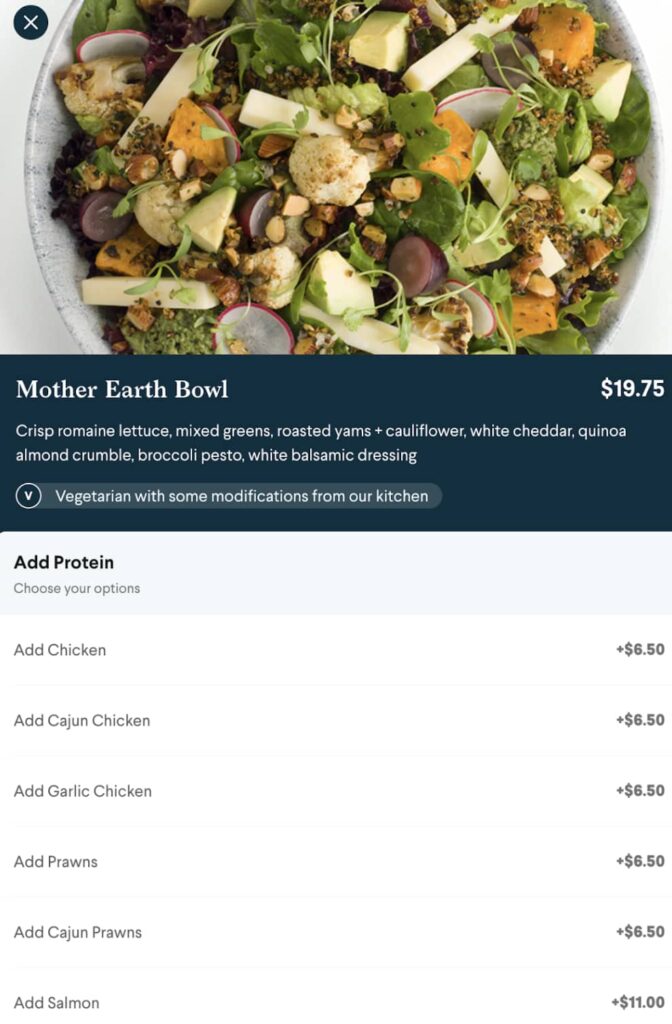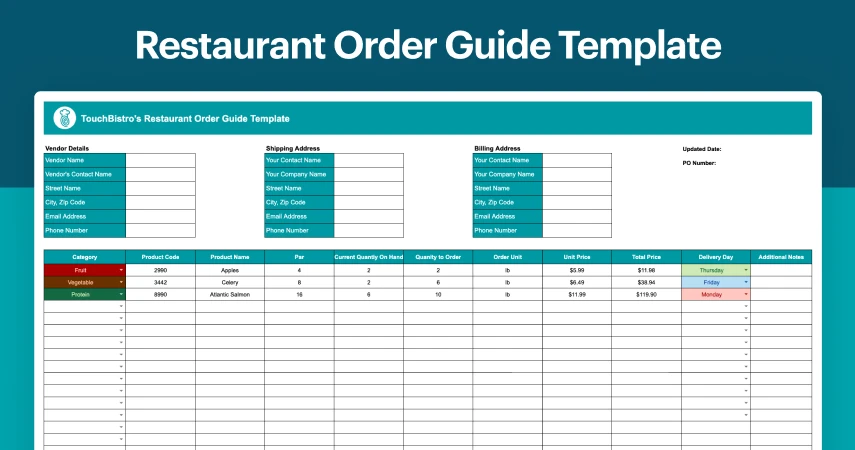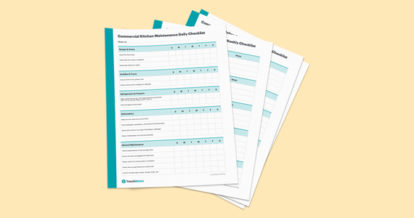From housing to gasoline to food, the cost of just about everything is on the rise these days. Diners are tightening their wallets, but at the same time, restaurateurs are faced with the need to increase restaurant prices so they can maintain healthy profits. The key to navigating these turbulent economic times lies in finding solutions that work for both your business and your customers.
In this guide, we’ll cover:
- Why restaurant costs are rising so much recently
- How diners are reacting to higher costs
- 8 tips to help you manage your restaurant menu prices in creative ways
Let’s dive in!
Why Are Restaurant Prices on the Rise?
Inflation has been making headlines around the globe for months, causing both businesses and consumers to feel the pinch. In 2022, inflation in America hit a record high of 9.1%, the likes of which hadn’t been seen since 1981.
As a result of rising inflation, soaring food and labor costs have forced restaurants (among other businesses in almost every industry) to raise their prices. Food prices jumped by 10.4% from June 2021 to June 2022, according to the U.S. Department of Labor. And some foods like eggs far exceed that number, seeing a price increase of 33%.
Why exactly is food so expensive nowadays? The COVID-19 pandemic, the war in Ukraine, and high energy prices all play a role, according to Forbes.
The pandemic affected numerous parts of the food supply chain like production, processing, and retail. As restaurants locked down, demand skyrocketed at grocery stores. And at the same time, new health protocols and increased labor turnover caused food production costs to spike.
The war in Ukraine further disrupted the supply chain for products like wheat, since Russia and Ukraine produce 30% of all worldwide wheat exports. But the food shortages don’t stop there. Chickpeas, sugar, avocados, eggs, and meat are among some of the other items that may be more difficult for restaurateurs to get their hands on.
All of these factors contribute to restaurant inflation, and in turn, higher restaurant menu prices.
How Diners Are Reacting to Higher Restaurant Prices
The fact is, diners are starting to notice higher menu prices. This means restaurants need to be strategic about any menu pricing strategies and changes they implement.
“Menu prices at limited-service concepts are up about 8% over 2020, while full-service restaurants are charging about 6% more,” according to a 2022 Forbes article.
In 2022, drive-thrus reported at least one less visit per week, per customer, states this Revenue Management Solutions report. However, food costs likely aren’t the only thing to blame for the decrease. Gas prices are probably also a major culprit. Still, 63% of consumers say today’s restaurant prices are “too high”, according to the report.
The silver lining? Even more consumers (83%) say grocery store prices are “higher” or “much higher”, which means consumers may actually shift some of their spending from grocers to restaurants. But 34% will order less expensive menu items.
All of these numbers show why restaurant menu management is critical right now to combat restaurant inflation. So, let’s explore some ways you can manage your menu costs.

8 Creative Ways to Manage Rising Menu Costs
1. Raise Menu Prices
The most obvious solution to help you tackle rising food costs is simply to increase your menu prices across the board. However, as a savvy restaurateur, you know that some of your guests may not react well to seeing higher restaurant prices on your menu.
You’ll need to get creative to increase your restaurant menu pricing without giving your guests sticker shock. A smart way to do this is by offering highly seasonal items, like seafood, at market price instead of a set price. This strategy also works for imported items like caviar.
Using a market price can help you mitigate food costs if the price you pay for a certain item fluctuates wildly from one week to the next. And, guests generally already expect to pay a premium for items like fresh lobster or a specific cut of beef. At the Taste of Maine Restaurant, for example, all lobster dishes on the menu are listed at market price.

2. Shrink Your Menu
If you don’t want to raise restaurant prices on your menu, another way to keep food costs down is to operate with a small menu, which many major chains have done recently. Shrinking your menu can help you lower costs by reducing food waste from unpopular menu items and enabling you to place more bulk orders, which can come with major savings.
In 2021, Forbes reported findings from a study by food industry research firm Datassential that showed 60% of restaurants surveyed had slimmed down their menus that year. Santa Monica-based French bistro Pasjoli is just one such example – the restaurant shrank its menu from 32 items to approximately 12 in 2021.
Trimming your menu items helps you do more than just mitigate increasing food costs. It can also streamline your back-of-house operations, which is especially useful if your kitchen is running with fewer cooks due to higher labor costs or a staff shortage.
3. Emphasize Add-Ons
Encouraging guests to order more items to raise your restaurant’s average transaction size can also help offset higher ingredient costs.
For instance, if you have steak on your menu, you could keep the cost of the main dish itself the same, while rounding out your menu with extra side dish options. Offering a shrimp skewer or baked potato is an excellent way to tempt customers to add to their meal.
Or, try giving guests more ways to customize their salad or bowl, like adding a grilled chicken breast or smoked salmon for an additional cost. That’s exactly what Earls in Calgary, Alberta does on its menu.

4. Reduce Portion Sizes
Unless you operate a fine dining venue, restaurant portion sizes are notoriously large, especially in the United States. So, if possible, it’s a wise move to see if you can make any of your own portion sizes smaller without compromising the guest experience.
Reducing portion sizes is known as “shrinkflation,” which is very common these days. Instead of raising prices, companies simply make items smaller, then sell them for the same price.
Petit Bill’s Bistro in Ottawa, Ontario is one restaurant that executed this strategy well. The bistro posted a photo of its new poutine dish on social media, explaining that the item was now “just a tad bit smaller to represent what an appetizer is supposed to be.”
The reason behind the change? The restaurant is now paying up to 20% more for food, so portion sizes are about 60% smaller, owner Terry Fitzpatrick told CBC News.

5. Leverage Menu Engineering
All seasoned restaurateurs know that restaurant menu design can impact your bottom line. So, instead of raising your prices, you can try employing menu psychology to emphasize your highest-margin dishes and drive sales of those items in particular.
How does menu engineering work? It’s as simple as using a slightly larger font or an eye-grabbing box, sketch, or photo to highlight certain menu items. This technique can translate into a higher average transaction size, with no extra cost to your customers.
This example shows how the menu at Applebee’s includes photos and icons indicating “signature items” to call guests’ attention to those dishes.

6. Analyze Sales Data and Food Costs
If you want to maintain your restaurant’s profit margins, you need to understand your numbers. Data can help you make strategic decisions about your menu to optimize your bottom line, like only raising your restaurant prices for certain dishes or eliminating low-margin dishes entirely.
By analyzing sales data, you can find out which menu items were your best and worst sellers during a given time period among various categories like appetizers, entrées, and desserts. You can then highlight items that sell well as “top picks” on your menu, and either cut the bad sellers or adjust their menu placement.
Next, by analyzing food cost reports, you can see which of your dishes are most profitable. If your butter chicken and cedar plank salmon entrées are equally popular, but your salmon has a higher food cost percentage, you may choose to highlight the former by changing its menu placement, or eliminate the latter. And to help you calculate the food cost percentage for each of your menu items, you can use our free food cost calculator.
7. Re-Evaluate Your Inventory Needs
Restaurant inventory management is an ongoing challenge for many businesses. You’d probably rather be conversing with guests or preparing a delicious meal for them than counting items in your stockroom. However, it’s important to master this tedious task if you want to keep your food costs and menu prices down.
During tough economic times, your inventory management practices shouldn’t be business as usual. Instead of continuing to order the same inventory you always do, take a critical look at your inventory and evaluate whether you really need everything you’re ordering.
For instance, if the cost of certain garnishes like fruit have gone up too much, maybe you can do without them for some of your menu items. Not to mention, getting strategic about inventory management can also help you reduce any food waste, which can lead to major cost savings.
8. Substitute Expensive Ingredients for Cheaper Substitutes
Certain ingredients have increased in price more than others over the past year. Instead of removing those components from your recipes entirely, you may be able to make substitutions to keep the cost of specific menu items down.
For example, the price of bacon has risen by 18.8% in the past year. So, if you serve a pizza with bacon on it, consider swapping that ingredient out for another meat. In addition, oils and fats including peanut butter have jumped between 11 and 15.6% in cost. That peanut butter bar on your menu? Try switching it up with another nut butter.

Use this free Excel spreadsheet to simplify the ordering process and improve inventory control.
We’ve now walked through why restaurant costs are on the rise and how diners are reacting to higher restaurant menu prices. You also have 8 tips in your back pocket to help you manage your food costs and your menu in creative ways. Here’s to a profitable rest of your year!
Download our free inventory template
Sign up for our free weekly TouchBistro Newsletter







